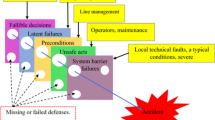Abstract
This paper presents an empirical study carried out in the automotive industry, with the aim to bring forward new experiences and knowledge on management of requirements in practice. Adopting a qualitative systems approach, and using multiple information sources, the requirements management process during the development of a passenger car cockpit has been mapped out. More specifically, the intention has been to identify and describe progress, changes, deviations, and compromises regarding the requirements and their fulfilment linked to the different phases of the product development. The logical reconstruction of the requirements management process is complemented with broad descriptions of associated phenomena, such as important events, organisational structures, competences, and attitudes. Findings are presented, analysed and discussed considering also factors underlying observed phenomena. Accompanying the empirical findings, the paper concludes with recommendations for constructive and efficient requirements management in practice.









Similar content being viewed by others
Notes
In the actual case, advanced engineering means a strategic development project not closely bound to a specific car project’s time plan, aimed at development and evaluation of conceptual and technical principles.
References
Baird F, Moore CJ, Jagodzinski AP (2000) An ethnographic study of engineering design teams at Rolls-Royce Aerospace, Des Stud 21:333–355
Blanchard B S, Fabrycky W J (2005) Systems engineering and analysis, 4th edn. Prentice-Hall, London
Chakrabarti A (2003) Processes for effective satisfaction of requirements by individual designers and design teams. In: Lindemann U (eds) Human behaviour in design: individuals, teams, tools. Springer, Berlin Heidelberg New York, pp 132–141
Coyne RD, Rosenman MA, Radford AD, Balachandran M, Gero JS (1990) Knowledge-based design systems. Addison-Wesley, Reading
Cross N (1994) Engineering design methods—strategies for product design, 2nd edn. Wiley, Chichester
Fagerström B, Jackson M (2002) Efficient collaboration between main and sub-suppliers. Comput Ind 49:25–35
Feldmann DG, Pott B, Schmidt J (2002) New approaches for computer support in application engineering, development and design of hydrostatic systems. SAE Technical Paper Series, 2002–01−1419, NCFP 102–17.3
Fricke E, Gebhard B, Negele H, Igenbergs E (2000) Coping with changes: causes, findings, and strategies. Syst Eng 3:169–179
Guba EG, Lincoln YS (1989) Fourth generation evaluation. Sage, Newbury Park
Hooks I, Stone D (1992) Requirements management: a case study—NASA’s assured crew return vehicle. In: Proceedings of NCOSE 1992 conference, pp 259–265
Hubka V (1987) Principles of engineering design. Heurista, Zürich
Hull E, Jackson K, Dick J (2005) Requirements engineering, 2nd edn. Springer, Berlin Heidelberg New York
Kotonya G, Sommerville I (1998) Requirements engineering: processes and techniques. Wiley, Chichester
Maiden N, Gizikis A (2001) Where do requirements come from? IEEE Softw 16(5):10–12
Moenaert RK, Caeldries F, Lievens A, Wauters E (2000) Communication flows in international product innovation teams. J Product Innovat Manag 17: 360–377
Nguyen L, Swatman P A (2003) Managing the requirements engineering process. Requir Eng 8: 55–68
Olsson F (1995) Principkonstruktion (In Swedish), Division of Machine Design, Department of Design Sciences, Lund Institute of Technology, Lund, Sweden
Pahl G, Beitz W (1996) Engineering design, a systematic approach, 2nd edn. Springer, Berlin Heidelberg New York
Pimmler TU, Eppinger SD (1994) Integration analysis of product decompositions. In: Proceedings of ASME, DTM ‘94, DE-Vol. 68, pp 343–351
Pugh S (1990) Total design—integrated methods for successful product engineering. Addison-Wesley, Wokingham
Robertson S, Robertson J (1999) Mastering the requirements process. Addison-Wesley, Wokingham
Robson C (1998) Real World Research—a resource for social scientists and practitioner-researchers. Blackwell, Oxford
Roozenburg NFM, Eekels J (1995) Product design: fundamentals and methods. Wiley, Chichester
Serena (2006) RTM, http://www.serena.com
Sobek DK II, Ward AC, Liker JK (1999). Toyota’s principles of set-based concurrent engineering. Sloan Manag Rev 40:67–83
Sosa ME, Eppinger SD, Rowles CM, (2000) Designing modular and integrative systems. In: Proceedings of ASME DETC 2000/DTM-14571
Stevens R, Brook P, Jackson K, Arnold S (1998) Systems engineering—coping with complexity. Prentice-Hall, London
Svensson L, Brulin G, Ellström P-E, Widegren Ö (2002) Interaktiv forskning—för utveckling av teori och praktik (in Swedish). Arbetslivsinstitutet, Stockholm
Telelogic (2006) Doors, http://www.telelogic.com
UGS (2006) Teamcenter systems engineering, http://www.ugs.com
Ulrich KT, Eppinger SD (2003) Product design and development, 3rd edn. McGraw-Hill, Boston
Ward A, Jeffrey KL, Cristiano JJ, Sobek DK II (1995) The second Toyota paradox: how delaying decisions can make better cars faster. Sloan Manage Rev, 36:43–61
Weber M, Weisbrod J (2003) Requirements engineering in automotive development: experiences and challenges. IEEE Softw 20:16–24
Wenzel S, Bauch T, Fricke E, Negele H (1997) Concurrent engineering and more—a systematic approach to successful product development. In: Proceedings of the seventh international symposium INCOSE, Los Angeles
Westlander G (1999) People at work—investigating socio-psychological contexts. Studentlitteratur, Lund
Westlander G (2000) Data collection methods by question-asking—the use of semi-structured interviews in research, Division of Integrated Product Development, Department of Machine Design, Royal Institute of Technology, Stockholm
Yin RK (1994) Case study research: design and methods, 2nd edn. Sage, Thousand Oaks
Acknowledgments
First of all we would like to express our gratitude to all those somehow involved in this study, including project and line management and all team members within the car manufacturer and at the system supplier, as well as all people commenting on early seminar presentations and versions of this paper. We would like especially, to thank all interviewees for giving frank and outspoken answers to our questions, as well as providing well-reasoned, clarifying views on requirements management and associated phenomena in product development as a whole. We also hope that all of you agree that 2 h spent on reflection upon one’s own situation is an excellent form of therapy, as many of you said when summarising the interviews. We are more than grateful. Furthermore, the financial support from the Swedish Foundation for Strategic Research through the ENDREA program (The Swedish Engineering Design Research and Education Agenda), VINNOVA (Swedish Agency for Innovation Systems), and the car manufacturer is gratefully acknowledged.
Author information
Authors and Affiliations
Corresponding author
Rights and permissions
About this article
Cite this article
Almefelt, L., Berglund, F., Nilsson, P. et al. Requirements management in practice: findings from an empirical study in the automotive industry. Res Eng Design 17, 113–134 (2006). https://doi.org/10.1007/s00163-006-0023-5
Received:
Revised:
Accepted:
Published:
Issue Date:
DOI: https://doi.org/10.1007/s00163-006-0023-5




